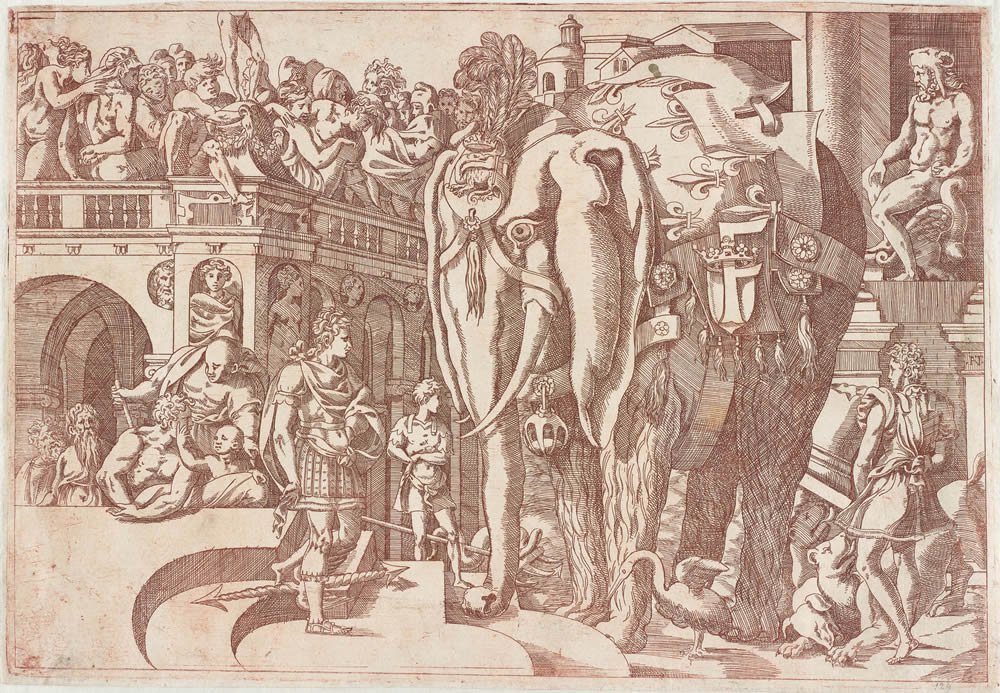Prints at the Court of Fontainebleau

The term School of Fontainebleau, first coined by Adam Bartsch two centuries ago, has come to encompass prints by a wide variety of artists and of disparate styles, some of them only tenuously linked to the art executed at the French court. A principal aim of the book is to define more precisely the prints that are likely to have been produced in a workshop at Fontainebleau, shedding light on the contributions of individual makers, their working practices and the collaborations between artists. It demonstrates that a relatively unified workshop was active at or near the palace between about 1542 and 1547, populated not only by the more well-known printmakers such as Léon Davent and Antonio Fantuzzi, but also by an important group of anonymous artists and monogrammists. The book will provide the first in-depth discussion on these anonymous masters, whose body of work constitutes about a third of the prints executed at Fontainebleau. Within this group, the oeuvre of the Master I♀V is particularly interesting both for its range " from the literal to the highly inventive and even the bizarre " and the degree to which it pushes the boundaries of pictorial experimentation.
The book takes a technical approach to the material, which includes analysis of paper, draftsmanship, and printing techniques. When strands of visual and physical evidence are pulled together, a network of associations is woven from which a general picture of printmaking at Fontainebleau emerges.
Such an object-based study allows for a clearer understanding of the prints, bringing to light a significant amount of new material and attributions. These include a number of etchings after Netherlandish artists such as Matthijs Cock and Herri met de Bles, a diverse group of little-known works after Michelangelo, and various model drawings used in the process of printmaking. Watermark analysis has led to the surprising discovery that chiaroscuro woodcuts were also made at Fontainebleau, demonstrating that this technique was known and appreciated in France earlier than previously thought.
One of the most distinctive aspects of the Fontainebleau prints is the breadth of influence they display and the manner in which the sources were used and interpreted by the printmakers. The book examines how the prints relate to their models in order to clarify the workshop practices that serve to shape and define the School. Often, the original source acted as a mere point of departure to be elaborated upon in imaginative ways, revealing the artistic personality of the individual printmaker. The identification of new sources provides added insight into the palace's lively artistic environment and the rich array of graphic material that circulated in its workshops. The designs of various Italian, Flemish and French artists provided inspiration for the printmakers, reflecting the diverse Fontainebleau site in which teams of artists from different corners of Europe were working side by side.
The first volume of the book is divided into chapters devoted to “Fontainebleau and its Printmakers” (Chapter One); “Sources” (Chapter Two); “Drawings as Evidence” (Chapter Three); and “Paper” (Chapter Four). The concluding chapter briefly addresses ways in which the prints produced at the French court may have been viewed and collected based on the visual information provided by the works themselves and the fragmentary evidence available regarding early collecting. Volumes II and III contain fully illustrated catalogues of the 440 prints from the School. Short entries accompany the catalogues of prints by Davent, Fantuzzi and Mignon, which give summary information on sources and related works, including early copies. The catalogues devoted to the lesser-known monogrammists and anonymous hands have full descriptive entries.
By Catherine Jenkins
3 volume set
870 pages with more than 600 illustrations
ISBN: 978-94-91539-40-4
Price € 495 / $ 650 per set

